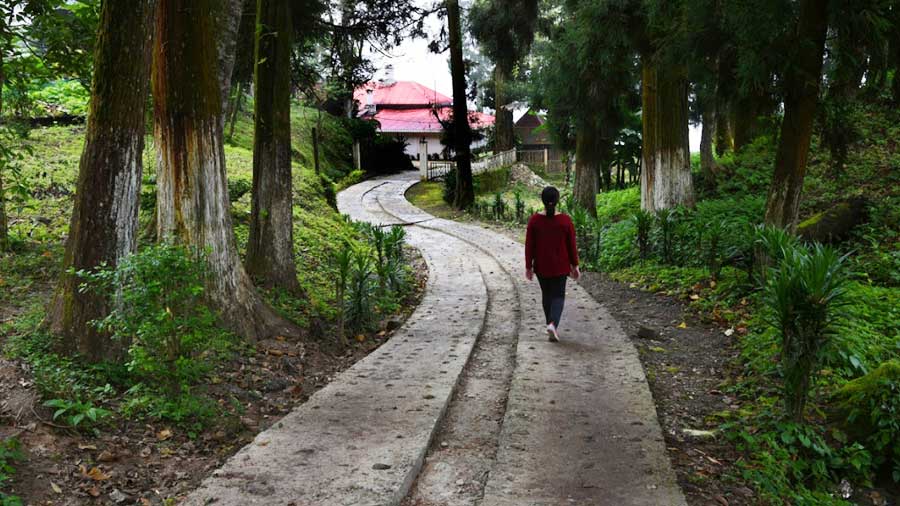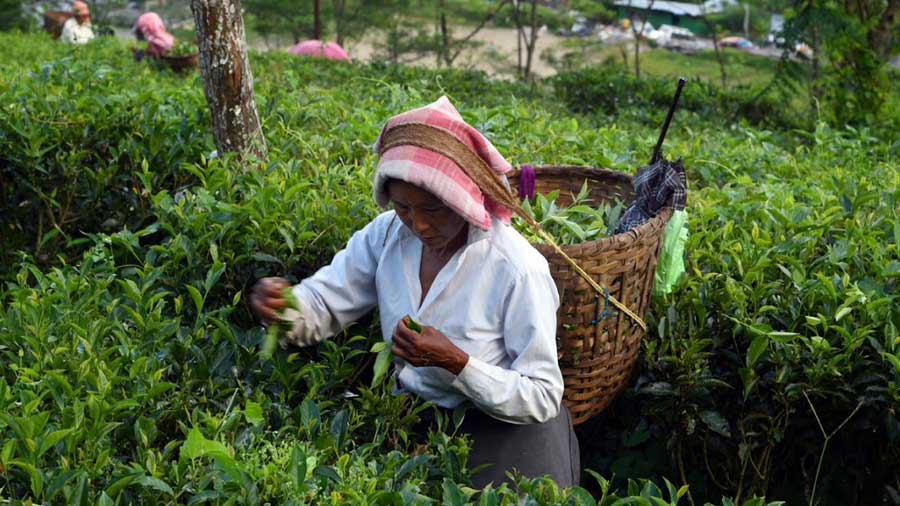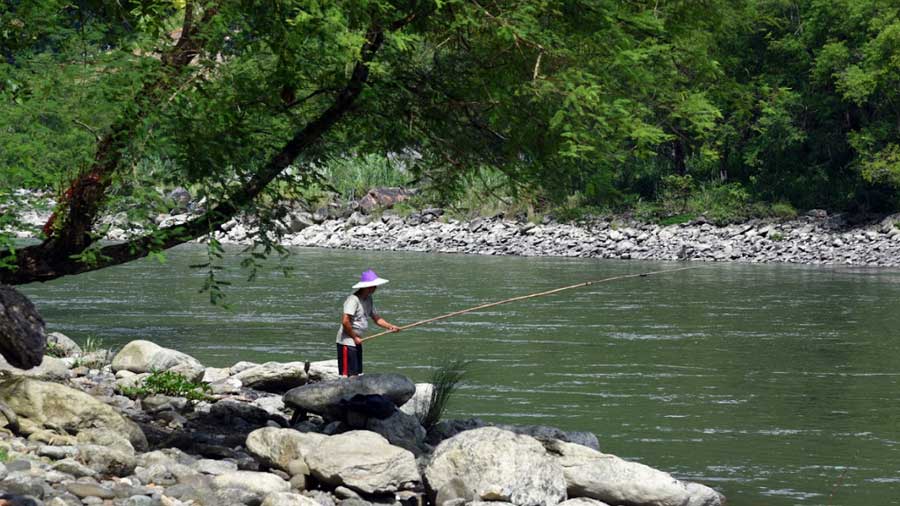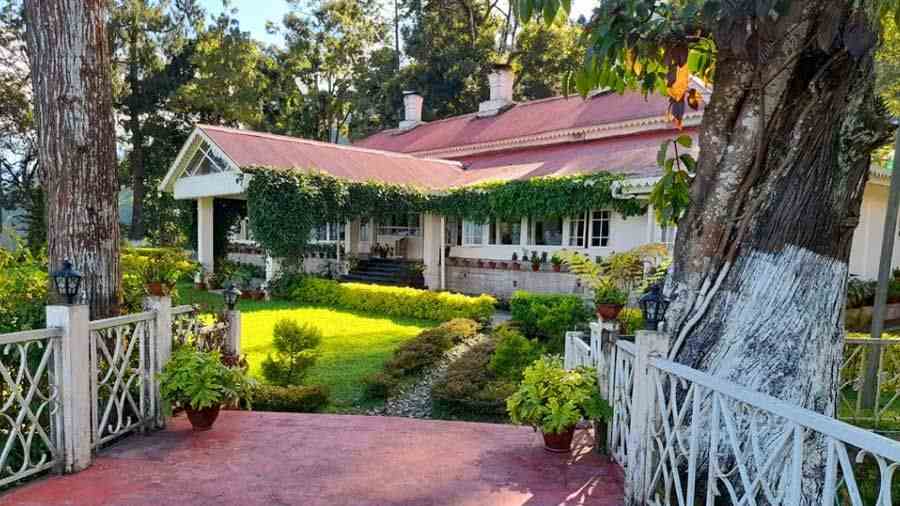Turn left from the railway station in Darjeeling and you are removed from the bustle of the main street in minutes, at least for a while. Past clusters of ramshackle houses, old general stores and rustic shops selling momos, you arrive at the crowded Chowk Bazaar. After a little while of navigating this chaotic stretch, crossing the sprawling facade of the famed North Point school, you are treated to sights of the valley’s emerald slopes. Soon, as the car swerves onto a dirt track and as the woody smell of tea bushes permeates through the air, you arrive at a majestic bungalow fronted by a lush lawn in an open compound.

A pathway winds towards Ging Tea House Sugato Mukherjee
This is Ging Tea House, a planter’s bungalow in the middle of the historic Ging Tea Estate. In the local Lepcha language, ging means ‘stretched out slope’ and the plantation, set up by the Darjeeling Tea Company in 1864, does justice to the name. British planters managed the gardens till 1965, after which Darjeeling Plantation India Ltd took over. In 2004, B.D. Tea Estates Private Ltd, a member of the Chamong Group, came into ownership. The family-owned company decided to include a full tea-estate experience for guests travelling to stay at Ging Tea House.

The spacious lounge Sugato Mukherjee
The estate bungalow, dating back to the mid-19th century, has been kept in a time warp. The six suites have been meticulously restored, replete with antique four-posters, wooden flooring, mirrored dressers, and dainty corner pieces. A grand piano and a billiards table, both from the same era as the house, grace a spacious lounge that opens to a neatly manicured lawn fringed with seasonal blossoms and a couple of old pine trees. A free-standing gazebo looks out to the rippling green tea bushes that seem to tumble down the hillside.
A sensory experience
A quintessential Ging experience includes a visit to the estate’s tea factory. Here, the freshly picked leaves are withered and rolled, fermented to a coppery red and dried to a dusty black before being sorted and packaged. Witnessing the process is a sensory experience, which culminates in the tea-tasting room.

A tea plucker at work Sugato Mukherjee
Almost similar to a wine-tasting session, you slurp a healthy sip of tea from a bowl, swirl it around your mouth to ensure that both the concoction and plenty of oxygen is passed over all the taste buds to create an equal taste profile. In the end, you spit out your sip of the sample brew into a receptacle — an important step in playing your part as a pro tea taster.

Angling on the Rangeet river Sugato Mukherjee
A hike, or a bone-rattling ride in a four-wheel drive, from the factory through verdant bushes and a forest, takes you to the sandy banks of the Rangeet river. This is the perfect spot for a sumptuous picnic lunch, usually laid out by the ever-smiling Prashant and Anjum, members of the property’s staff. Members of the support team at Ging, all from the local community, are an integral part of the experience and make you feel right at home. They exude warmth and geniality and will keep you well fed with English breakfasts on the gazebo or sundeck, four-course Chinese lunches and lavish dinners showcasing local fare (definitely try the pork with spinach).

The gazebo where you can enjoy your breakfast, high tea or a quiet cuppa Sugato Mukherjee
Through your stay, the gazebo might become your favourite spot. Soaking in the beauty of the emerald slopes, bathed in mellow sunshine one moment and blanketed by wispy mist the next, is the best way to savour a cup of the finest second flush at Ging’s.
Where: Ging Tea Estate is three hours by road from NJP station and Bagdogra airport and 10 km from Darjeeling’s city centre.
Stay: Choose from six well-laid out suites, some with old fireplaces. The best two suites are Blue Lady and Royal Assam.
Sugato Mukherjee is a Kolkata-based photographer and writer whose work has appeared in The Globe and Mail, Al Jazeera and Nat Geo Traveller, among other places. He is the author of a coffee-table book on Ladakh and a book on the sulphur miners of East Java.
